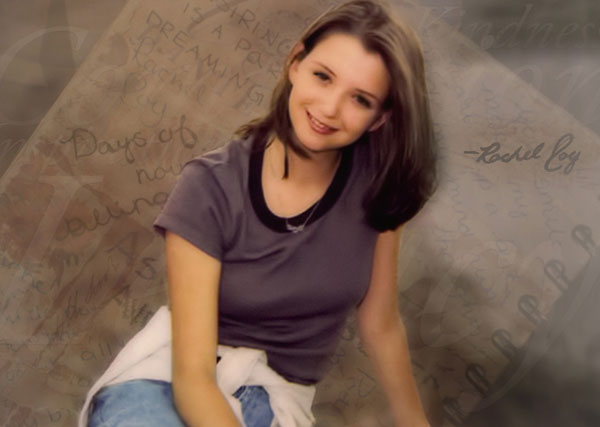First Columbine victim leaves legacy, sparks chain reaction

Lakeisha Moore
The Signal
On April 20, 1999, gunshots were fired at Columbine High School in Littleton, Co.; those shots were heard across the world. Before taking their own lives, students Dylan Klebold and Eric Harris prowled the school campus opening fire on classmates and teachers.
Rachel Scott was sitting on a hill near the west entrance of the school campus having lunch with a friend. Minutes later, four bullets pierced her body leaving her dead. Rachel was the first of 13 victims.
A month after the shooting Rachel’s father, Darrell Scott, was invited to speak before a Congressional Subcommittee on the topic of school violence. His speech, which was video taped, focused on the premise of teaching children proper character and morals. Viewed more than one million times shortly after its debut, it is believed that the video of Scott’s speech struck a chord in many.
“Those in attendance expected the speech to revolve around the topic of gun control,” Scott said. “Instead, the audience heard an assertion – when we stop teaching character and morals, right from wrong, we are creating environments within which Columbine-like incidents can occur.”
Less than one year after his speech, Scott and his wife, Sandy, started Rachel’s Challenge with the intent of honoring their 17-year-old daughter’s life and helping to prevent others from experiencing the earth-shattering incident that struck the Scott family.
The program’s objectives are simple: create a safe and productive learning environment by delivering proactive anecdotes to bullying and violence, provide leadership development and individual growth, and improve retention and achievement by engaging participants’ heart, head and hands in the learning process. The program’s overall objective is to spark a chain reaction.
The program was founded upon Rachel Scott’s personal beliefs.
“Rachel had an inward motivation to accomplish as much as possible,” Scott explained. “Whenever she sensed an injustice being done to someone, no matter how small or seemingly insignificant it was, indignation rose up within her. She was always ready to stand up for anyone who she felt was mistreated.”
Rachel was known for her warm-hearted, gentle kindness and ability to connect with perfect strangers. She had a reputation of befriending those who were often looked over by others. Rachel is often compared to another historical teenage girl who encompassed many of the same characteristics: Anne Frank. Just like Rachel, Anne’s father, Otto Frank, played an integral part of continuing her legacy.
In a class essay on ethics, Rachel wrote, “I am sure that my code of life may be different from yours, but how do you know that trust, compassion and beauty will not make this world a better place to be in and this life a better one to live? My codes may seem like a fantasy that can never be reached, but test them for yourself and see what kind of effect they have in the lives of people around you. You just may start a chain reaction.”
Rachel seemed to possess an extremely special gift. At the age of 13, she drew an outline of her hand on the back of her dresser. In it she wrote, “These hands belong to Rachel Joy Scott and will someday touch the lives of millions.”
Rachel’s Challenge has entered schools throughout the nation with more than 17 million total in attendance. Earlier this year more than 2,000 Dickinson High School (DHS) students were added to that number.
“Rachel’s Challenge was very well received by Dickinson High School students,” said Jeannie Thielemann, executive director of development and community relations for the Dickinson Independent School District Education Foundation. “This was not just another program where students were lectured to by some unfamiliar adult about the dangers of school violence. It has been so much more. It has challenged our high school students to look at how they can inspire others and create a permanent and positive cultural change in their school and community.”
The Rachel’s Challenge presentation at DHS did what it was intended to do, which is to spark a chain reaction. DHS junior Madison Gove added another link to that chain by starting a program called GatorTrust.
“The GatorTrust is a student-led group that mentors other students with their studies and works to inspire them to stay in school and help prevent school-related problems,” Thielemann explained.
The idea of students helping students may seem far-fetched, but GatorTrust was a direct result of the Rachel’s Challenge presentation.
“Sept. 14 will always live in my mind as the day our school began to transform; I have never seen so many people let their emotions out in such an open setting,” Gove said, remembering what it felt like to be a member of the audience. “With every classroom I visited that day, I witnessed a growth of compassion between students. The football jock and the shy, book-smart girl – strangers before – attempted to see eye-to-eye for the first time.”
Gove, like many others, accepted Rachel’s Challenge: to be kind, caring, compassionate and to start a chain reaction.
“The Rachel’s Challenge presentation was one of the few assemblies that turned out to be more than just a free period off,” Gove said. “After the program we started to see students, not look past them.”

